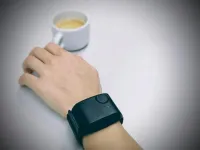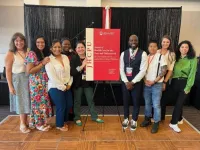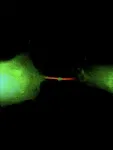Not peer-reviewed/experimental study/people
Researchers have announced preliminary results of using wearable technology to measure electrical impulses in the skin and other physiological biomarkers which might be associated with mood changes in bipolar disorder. The work is at an early stage, but they hope that they will be able to build on these patterns to detect mood swings in bipolar disorder sufferers, so helping in diagnosis and potentially offering more rapid and personalized treatments.
Bipolar disorder (formerly called manic-depressive illness or manic depression) is a mental illness that causes swings in a person’s mood, energy, activity levels, and concentration. These shifts can make it difficult to carry out day-to-day tasks and can make interactions with other people difficult. The degree of mood swing can vary from person to person, from feeling manic (very “up”) to feeling depressed. At present, these mood swings are mostly diagnosed subjectively, through interview with doctors or by questionnaires. This takes time, and requires an immediate medical presence.
Now a group of Barcelona-based psychiatrists, in collaboration with data scientist in Edinburgh, have used a research grade wearable device to continuously collect several physiological biomarkers during the diverse phases and episodes of bipolar disorder. Among the collected physiological biomarkers is electrodermal activity which uses changes in the skin’s electrical conductivity to indicate the level of stress through the reactivity of the nervous system. This is a potential immediate indicator of whether someone is in a manic, depressive or in a normal mood state.
They recruited 38 patients with bipolar disorder, and 19 healthy controls, all from the Barcelona area.
Researcher Diego Hidalgo-Mazzei said “Each participant was fitted with a commercially available Empatica E4 bracelet, which they were asked to wear for around 48 hours. This can measure a variety of physiological changes, but we were most interested in measuring small electrophysiological changes in the skin of the wearer. We found that bipolar disorder patients in their depressed phase had on average a significantly lower skin electrical activity than the rest of the bipolar group or the healthy control group. We also found that as an individual moved from manic to depressive state (or vice versa), this was detectable by a change in skin surface electrical activity.
It is important for the patient and doctor to know how and when these mood fluctuations take place. It is important also to highlight that the treatment is different for manic or depressive states. This can help with a prompt diagnosis and early personalized treatment, but it can also help in preventing adverse outcomes, for example in alerting to an increased risk of suicide, or of mood swings which may lead to dangers with activities such as driving. It is also easier to treat patients if we know if they are in a manic phase or a depressed phase. Until now, these mood swings have mostly been diagnosed subjectively, through interview with doctors or by questionnaires, and this had led to real difficulties. Arriving at the correct drug is difficult, with only around 30 to 40% of treated individuals having the expected response. We hope that the additional information these systems can provide will give us greater certainty in treating patients.
We are still some way from that though. This is an exploratory observational study, so we need to look at a larger sample and use machine learning to analyse all the biomarkers collected by the wearers to confirm the findings to determine patterns which might indicate a specific episode. This may not be ideal for every bipolar disorder sufferer, in every circumstance, but a potential pattern may help in the future the people hardest hit by the mood changes which affect their lives”.
According to a 2019 study between 1% and 2% of Europeans suffer from bipolar disorder (exact numbers are difficult to obtain), meaning that over 700,000 suffer in Europe. That’s equivalent to a city the size of Frankfurt, Washington DC, or Glasgow. (https://www.thelancet.com/journals/lanepe/article/PIIS2666-7762(22)00034-5/fulltext).
Commenting, Professor Paolo Ossola (of the University of Parma, Italy) said:
“In this seminal study, Dr Hidalgo and collaborators have laid the foundation for a new approach to diagnosing and treating bipolar disorders. Bipolar disorder is defined by the occurrence of episodes (either manic or depressive) interspersed with periods of wellbeing known as euthymia. To date, the course of the illness is entirely unpredictable, and the occurrence of new episodes relies solely on their early recognition at a subjective level through early-warning symptoms.
Having a physiological biomarker that extends beyond the subjective level would enable more timely intervention. More importantly, the fact that it originates from a wearable device could assist individuals who, due to geographical reasons, lack easy access to clinical facilities.
The shift from the subjective to the biological level could also promote understanding of the underlying mechanistic dynamics of mood swings. Previous attempts, based on the study of motor behaviour using wearable devices, failed to differentiate, for example, the restlessness caused by anxiety in a depressive episode from the initial hyperactivation associated with a manic switch. A more finely tuned biomarker, such as skin conductance, could capture these subtle changes and thus determine whether a treatment is effective and the reasons behind it.
As the authors note, this is just a preliminary exploratory study, but their encouraging results could pave the way for future research aimed at unravelling clinical puzzles in the diagnosis and treatment of bipolar disorder.
The exciting collaboration between doctors and data scientists is significantly accelerating the development of this new branch of precision psychiatry. I eagerly anticipate the much-needed transition from 'bench to bedside' with these technologies becoming available in community-based mental health settings”.
This is an independent comment, Professor Ossola was not involved in this work.
Notes
This work is presented at the 36th ECNP Congress, which takes place in Barcelona and online on 7-10 October 2023, see https://www.ecnp.eu/Congress2023/ECNPcongress. With more than 6,000 participants the ECNP Congress is Europe’s leading platform for the latest research in disease-related neuroscience.
For more information and updates about the study, see: https://intrepibd.github.io/.
This project was funded by the ISCIII (FIS PI21/00340, TIMEBASE Study), co-funded by the Euopean Union, as well as a Baszucki Brain Research Fund grant from the Milken Institute.
For information on the wearable device see https://e4.empatica.com/e4-wristband
END





